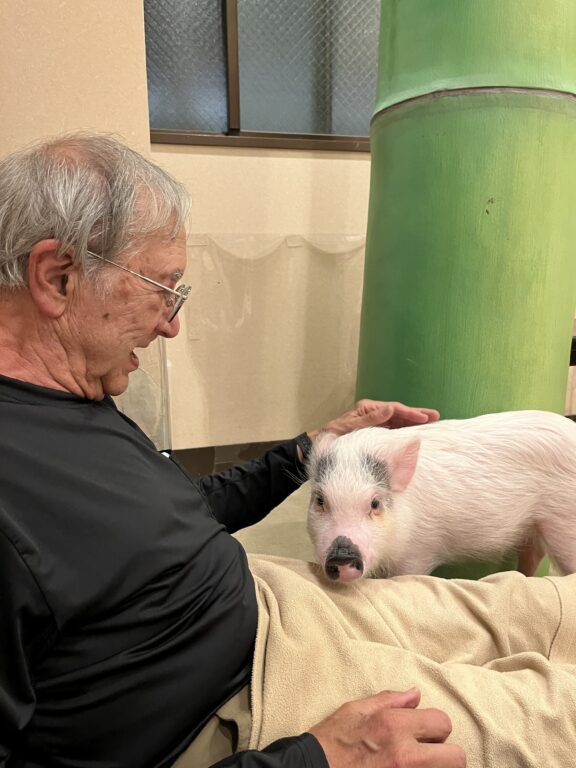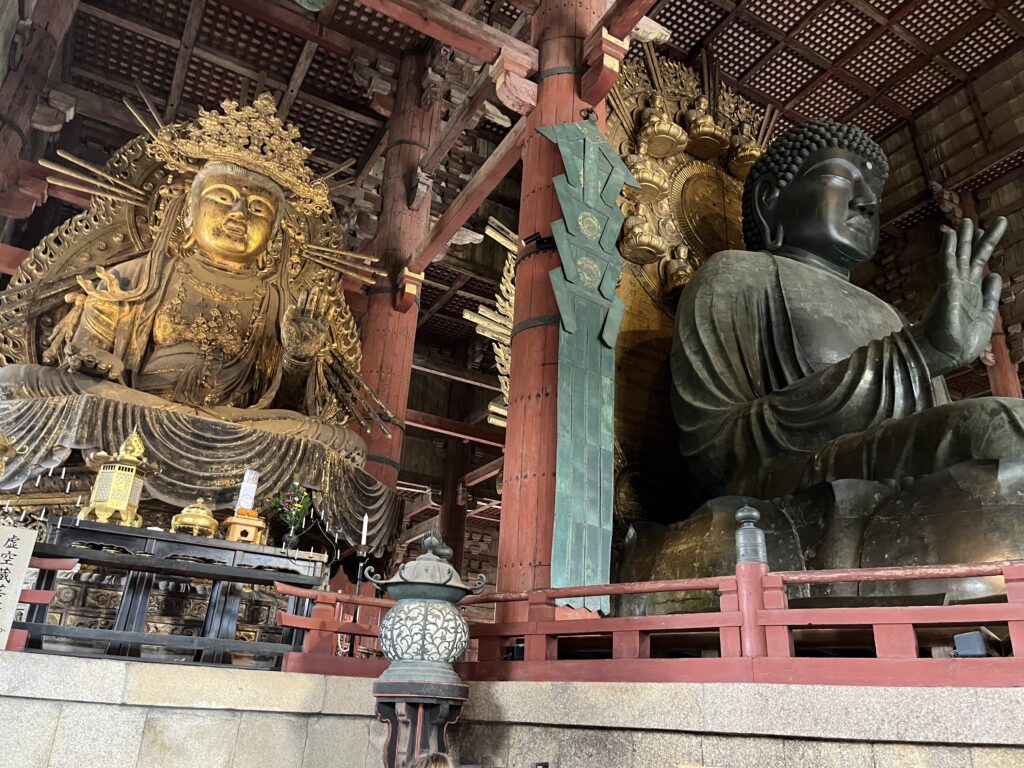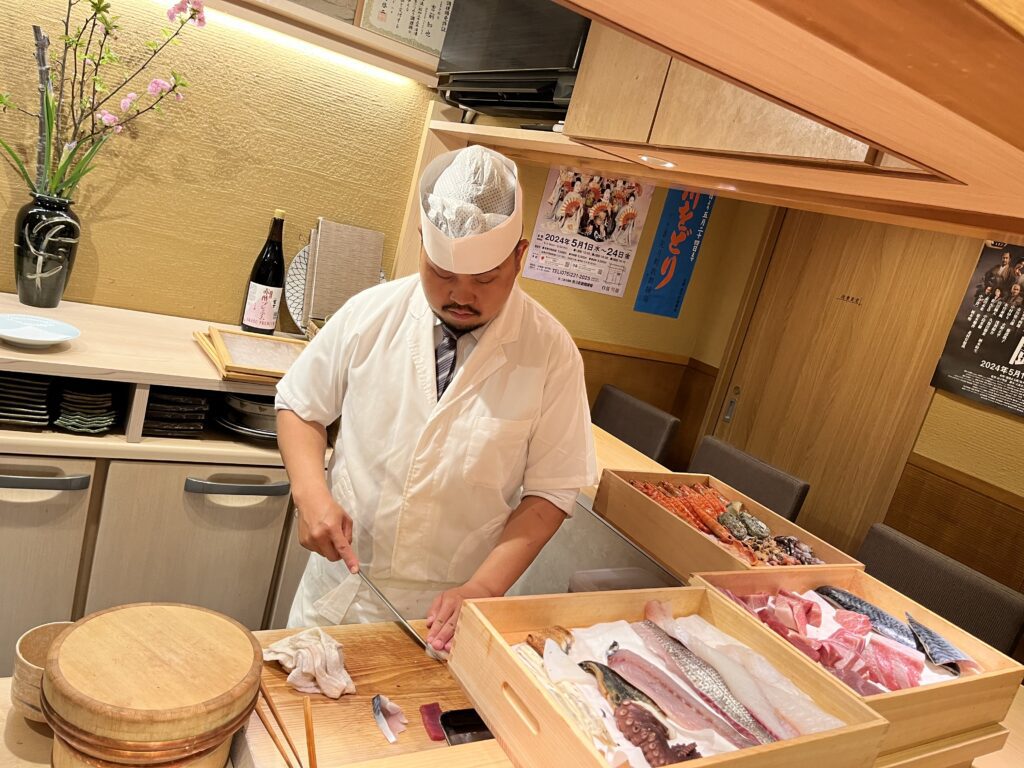Consumer Diary: Travel Insurance

Audio By Carbonatix

Cherry blossoms at the Tokyo National Museum. Photo credit: Harlan Levy
Consumer columnist and West Hartford resident Harlan Levy has more than 20 years of experience writing stories about everyday experiences that anyone could encounter.

Our Japan trip highlights included the odd Japanese pig-cuddling shops. Courtesy of Harlan Levy
By Harlan Levy
The high season for travel is almost here, and all predictions are for a record-breaking pent-up release after we leave the pandemic behind. So it behooves you to consider travel insurance to counter the possible – or probable – airline delays and cancellations, the vacation screw-ups, medical emergencies, baggage losses, traffic accidents, and other mishaps that can mess up your plans.

In Nara, the sacred deer live in their own park and are happy to eat deer crackers out of your hand. Courtesy of Harlan Levy
We (I mean my wife, the ultimate concierge/travel planner) spent a few intense days on navigating insurance options before our last-minute decision to visit Japan over the last two weeks. I’ll describe the results and give some advice. If something had gone wrong we might not have had unforgettable, unhindered experiences with cherry blossoms, Mount Fuji, pig-cuddling, sushi and ramen eating, the amazing Kyoto fish market, deer-feeding in Nara, insane shopping experiences, and more.
Here’s what I learned from extensive online research, especially from Business Insider, Upgradepoints.com, SquareMouth, ForbesAdvisor, and many more.

An exclusive individually prepared sushi meal prepared by the chef specifically for us. Courtesy of Harlan Levy
Credit card vs. Stand-alone travel insurance
Generally, stand-alone travel insurance policies will cover more than premium credit card travel insurance, which costs nothing extra and covers delays, lost baggage, rental car collisions, and other unforeseen events, but the exact coverages depend on the credit card. Usually, only trips booked with that card qualify for coverage. With some exceptions, credit cards usually won’t cover medical emergencies or injuries unless they’re catastrophic. For example, the Chase Sapphire Reserve offers up to $1 million of coverage for an accident that causes loss of life, speech, hearing, or use of a hand, among other life-altering injuries. Other cards offering protections include the Platinum Card from American Express, the Bank of America Premium Rewards credit card, and the United Club Infinite Card. Most cards with travel benefits charge an annual fee. Also, credit card coverage limits usually are much lower than stand-alone policies’ offerings. Credit card protections often cap reimbursement at just $10,000 a trip, while travel insurance usually goes up to $100,000.
Stand-alones will cover expensive medical emergencies, hospital visits, and evacuations and may even cover cancellations for no reason (Cancel for Any Reason insurance), while credit cards generally won’t. Since your health insurance does not cover you when you’re out of the country, and a broken arm from a fall or a heart attack can be financially devastating, you’ll want a stand-alone, since it will respond to a financial loss, proven by a medical bill, a medical clinic receipt, or a doctor’s medical statement.
Some travel insurance policies also provide epidemic coverage, which covers customers who become ill with COVID-19 or a future epidemic, are individually ordered to quarantine, or are denied boarding due to a suspected illness,
While credit card insurance is usually included in the cost of the card, traditional travel insurance is an additional expense, usually 5% to 6% of the trip’s worth, though rates can range from 4% to 12%.
Compare travel insurance quotes from multiple providers with Squaremouth, Trustpilot.com, and the BBB.
Our conclusion
After all our research, we decided to buy a stand-alone policy and compared costs and coverage from companies that had the best reputations: ALLIANZ, Tin Leg (yup … that’s a real company), and AARDY in the following chart:
| AllianzBasic | Classic | TinLeg STD | TinLeg Gold | AARDY | |
| Cost: | $1,066 | $1,419 | $738 | $1,090 | $981 |
| Cancel: | 100% | 100% | 100% | 100% | 100% |
| Interrupt: | 100% | 150% | 150% | 150% | 150% |
| MedEvac: | $50K | $500K | $200K | $500K | $250K |
| Emergency
Med&Dent: |
$10K | $50K | $30K | $500K | $100K |
| Bag Loss: | $500 | $1,000 | $500 | $500 | $1,500 |
We went with AARDY.
NOTE: We were advised to take local money to an international destination, so we each purchased $250 in yen at the airport, JFK in New York. We could have bought yen from our local bank, but it would have taken three or four days. I also learned that when using our debit cards in Japan the debit card fee was a cheap 1% of each transaction ($100 cost $1). So, if you’re leaving the country, check the debit card fee.
Now you know. Happy trails!

Here’s the largest Buddha statue in the world in Nara. Courtesy of Harlan Levy

Our Japan trip highlights included the odd Japanese pig-cuddling shops. Courtesy of Harlan Levy

An exclusive individually prepared sushi meal prepared by the chef specifically for us. Courtesy of Harlan Levy
NOTE: If you have a consumer problem, contact me at [email protected] (“Consumer” in Subject line”), and, with the power of the press, maybe I can help.
Like what you see here? Click here to subscribe to We-Ha’s newsletter so you’ll always be in the know about what’s happening in West Hartford! Click the blue button below to become a supporter of We-Ha.com and our efforts to continue producing quality journalism.



